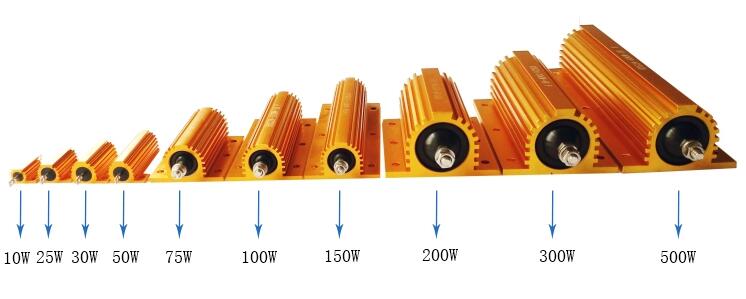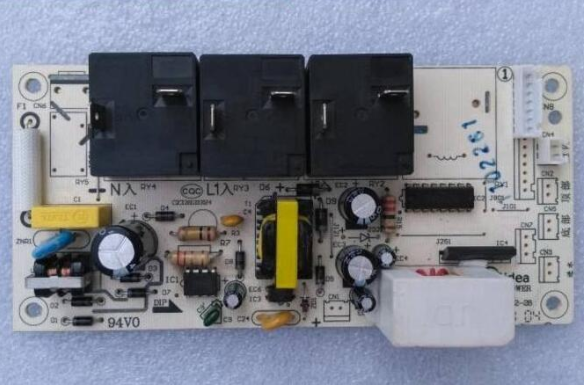Position:Home » Industry News
Resistors' Development Trend
Writer:Microhm Page View:Date:2019-12-19
Wirewound resistors have been around for a long time. They enjoy a long life because they have some very important features not duplicated by new technology products, such as Nual series, GTW series, KSW series and more . If you must optimize circuit designs where precision is important, you should understand those characteristics.
For most of the history of electronic and electrical circuits, wirewound resistors were commonly used as precision resistances. Wirewound precision resistors have some important characteristics. First, they can have very tight resistance tolerances . . . 0.005% is commonly achieved, like Microhm Electronics' KSW series. More important, they are stable (15-50ppm/yr) maintaining their precision over time because they are made with stable materials. Their TCR (Temperature Coefficient of Resistance) is low (<10ppm/°C) and can be controlled by selecting special wire alloys. (Usually, you need the lowest TCR, but a higher TCR has special interest in some applications.)

In the past, the bulk of the resistor market went to carbon composition products. They are not accurate; you can sort them to tolerances of about 1% at best. They are unstable, have poor TCR (1000 ppm/C) and generate electrical noise. Low cost is their advantage. Now, film technology products are replacing carbon resistors.
There are two common film types, thick film and metal or thin film. Thick film resistors are made by silk-screening conductive paint onto an insulating substrate. The paint is "fired" to make the assembly permanent. Thick film resistors have many carbon resistor characteristics. On the good side, they can be made small and are low cost in high quantities. However, they cannot have tight resistance tolerances (>0.1%), they have large TCR (50-100ppm/C) and they are unstable (500-1000ppm/yr.) Thick film technology is especially important in hybrid and integrated circuits because resistors can be "printed" onto the substrate, eliminating board loading and soldering steps, LMK series is a typical thick-film resistors.

Metal film resistors are a better technology. They are made by an evaporation/deposition process where a base metal is vaporized in a vacuum and deposited on an insulating substrate. Compared to precision wirewounds, they are not as accurate (>0.01%), have higher TCR (20-200ppm/C), and are not as stable (200-600ppm/yr.) They can be small for "chip" applications, are low cost in high quantities, and are excellent in high frequency and fast rise time applications. Microhm Electronics' lineup of metal film resistors include HPMRY, PMRY, EE series, NLT series and more for customers' options.
If the application involves fast rise times (microseconds) or high frequencies (megahertz), metal film products are best. When cost is the only consideration, use metal films. (Incidently, on a board full of "normal" components, the higher cost of a few precision resistors will have a small total cost impact.) If size is critical, as in hybrid circuits and "chip" applications, metal films have the advantage.
For most of the history of electronic and electrical circuits, wirewound resistors were commonly used as precision resistances. Wirewound precision resistors have some important characteristics. First, they can have very tight resistance tolerances . . . 0.005% is commonly achieved, like Microhm Electronics' KSW series. More important, they are stable (15-50ppm/yr) maintaining their precision over time because they are made with stable materials. Their TCR (Temperature Coefficient of Resistance) is low (<10ppm/°C) and can be controlled by selecting special wire alloys. (Usually, you need the lowest TCR, but a higher TCR has special interest in some applications.)

In the past, the bulk of the resistor market went to carbon composition products. They are not accurate; you can sort them to tolerances of about 1% at best. They are unstable, have poor TCR (1000 ppm/C) and generate electrical noise. Low cost is their advantage. Now, film technology products are replacing carbon resistors.
There are two common film types, thick film and metal or thin film. Thick film resistors are made by silk-screening conductive paint onto an insulating substrate. The paint is "fired" to make the assembly permanent. Thick film resistors have many carbon resistor characteristics. On the good side, they can be made small and are low cost in high quantities. However, they cannot have tight resistance tolerances (>0.1%), they have large TCR (50-100ppm/C) and they are unstable (500-1000ppm/yr.) Thick film technology is especially important in hybrid and integrated circuits because resistors can be "printed" onto the substrate, eliminating board loading and soldering steps, LMK series is a typical thick-film resistors.

Metal film resistors are a better technology. They are made by an evaporation/deposition process where a base metal is vaporized in a vacuum and deposited on an insulating substrate. Compared to precision wirewounds, they are not as accurate (>0.01%), have higher TCR (20-200ppm/C), and are not as stable (200-600ppm/yr.) They can be small for "chip" applications, are low cost in high quantities, and are excellent in high frequency and fast rise time applications. Microhm Electronics' lineup of metal film resistors include HPMRY, PMRY, EE series, NLT series and more for customers' options.
If the application involves fast rise times (microseconds) or high frequencies (megahertz), metal film products are best. When cost is the only consideration, use metal films. (Incidently, on a board full of "normal" components, the higher cost of a few precision resistors will have a small total cost impact.) If size is critical, as in hybrid circuits and "chip" applications, metal films have the advantage.
Keywords:
Latest News
- Resistor's role in measuring and correcting LED,,,
- Single through-hole resistors' characteristics ,,,
- Why shunt resistors for current sense applicati,,,
- Metal-film resistors with small size, high resi,,,
- 36W High-Current Shunt Resistors MMS8420,,,
- 1W Surface Mount Resistor MPR1206,,,
- An Overview of Microhm Electronics' Resistor Pr,,,
- More anti-sulfur resistors used in harsh envir,,,
- Resistance changes with temperature,,,
- 140W TO247 High Power Heatsinkable Resistor,,,
- MMS5930 is ideal for current sensing in industr,,,
- Shunt resistors selection for engineers' design,,,
- Considerations for choosing precision resistors,,,
- Ceramic Encased Cement Resistors NWH Series for,,,
- Resistors for Passive Balancing in Battery-Pow,,,
Hot Articles
- Microhm will take part in 10th Automotive World,,,
- Thanks for Visiting Microhm's Booth E5-5706 in ,,,
- Resistors in Short Supply: Blame Cars,,,
- New lunch: High Power Precision Shunt Resistor,,,,
- How to Test a Resistor,,,
- Innovative Technology, Future Electric: Electri,,,
- What is Precision Resistors?,,,
- SMD Resistors Sizes and Packages,,,
- The Construction and Features of Metal Film Res,,,
- What is a TO-220 Resisor?,,,
- Hot Selling Products: Precision Shunt Resistors,,,
- How to Calculate the Equivalent Resistance Valu,,,
- What is a Fixed Resistor?,,,
- Resistors in LED Circuits,,,
- Resistors Types and Materials Overview,,,
Resistance applications
- BMS for New Energy Vehicle,,,
- Difference Between High Precision Resistors and,,,
- Carbon Film Resistors' Features and Application,,,
- Industrial Roberts Applied to Solar Photovoltai,,,
- Surface Mount Resistor's Size and Package ,,,
- Shunt Resistor MMS8420 for High Current Stable ,,,
- The Main Application for High Precision and Low,,,
- Why Zero-Ohm Resistors?,,,
- The Measurement Accuracy of Automotive Shunt is,,,
- Heater Blower Motor Resistor in Air Conditioner,,,
- Urbanization Development Bringing the Transform,,,
- Select the Right Resistor for Harmonic Filterin,,,
- Miniature future for passive electronic compone,,,
- The Four Important Functions of Alloy Resistors,,,
- Precision Resistors' Construction and TCR,,,
